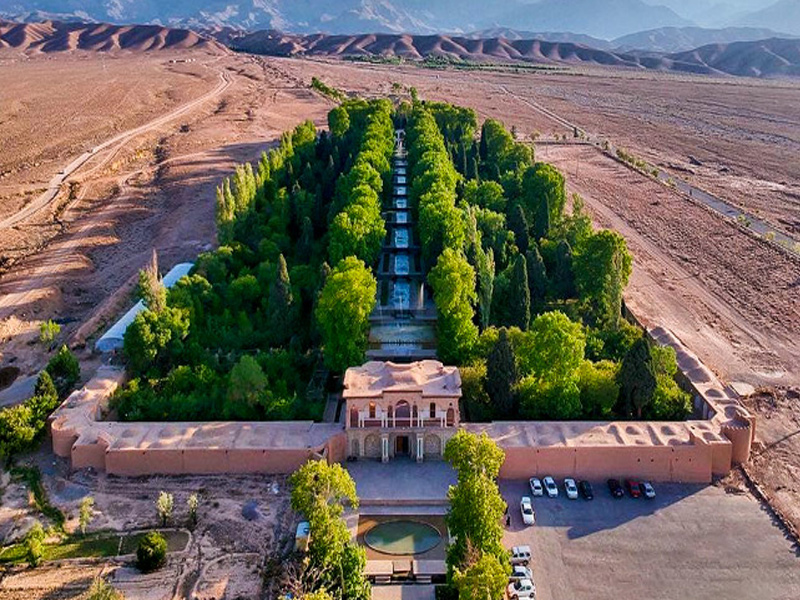Iranian gardens are uniquely designed to provide a cool and pleasant atmosphere where you can breathe in fresh air and enjoy the sound of water. Iranians have been creating gardens for thousands of years, which is why some of the most beautiful gardens in the world can be found in various cities across Iran. Some of these famous Iranian gardens are registered on UNESCO’s World Heritage List and are considered among the most valuable tourist attractions in Iran. In this article from Eligasht, we will introduce some of Iran’s magnificent gardens.
Book Iran Air flights from London to Tehran and Tehran to London with Eligasht UK:
1- Pasargadae Garden in Marvdasht, a registered Iranian garden in the UNESCO
Pasargadae Garden, also known as the Royal Garden or the Complex of Cyrus, is part of the Iranian Gardens World Heritage Site located in Pasargadae. The construction of this garden was ordered directly by Cyrus the Great, the founder and the first king of the Achaemenid Empire, and it features realistic designs. Afterward, it was built according to his instructions.
It is worth mentioning that Pasargadae Garden in Marvdasht, as an authentic example of an Iranian garden, has incorporated another garden within it, designed with the same layout and attractiveness as a miniature representation of the main garden.
According to historical and ancient facts, even the arrangement of trees and plants in the vicinity of the original Iranian garden in Pasargadae was carried out under the command of Cyrus the Great. The irrigation systems in the gardens of Pasargadae were in the form of stone aqueducts and small concrete water catchments, which easily provided irrigation through the surrounding rivers. Unfortunately, no signs or remnants of the glorious Pasargadae Garden have survived.
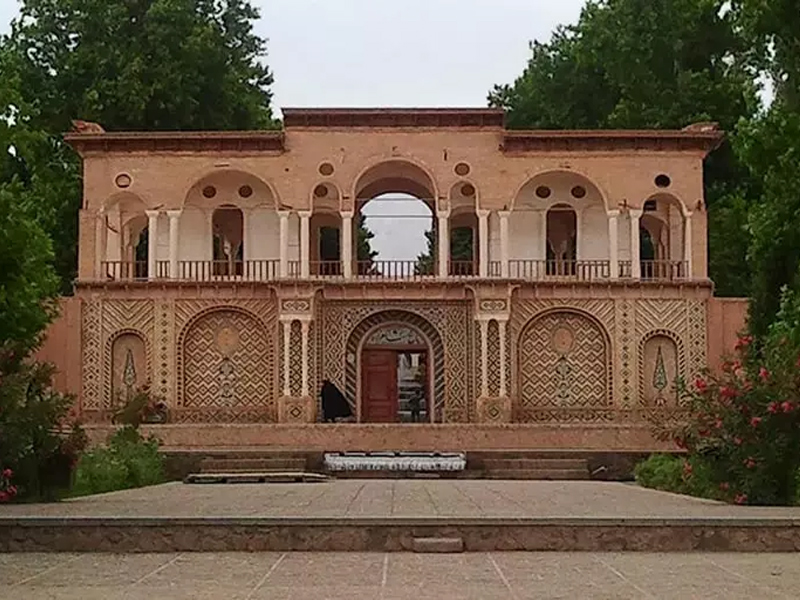
2- Shahzadeh Mahan Garden
Shahzadeh Mahan Garden is considered one of the most fascinating and magnificent traditional Iranian gardens. The garden is located two kilometers away from the city of Mahan, situated near the city of Kerman and at the foothills of the Tigran Mountains. Initially, this Iranian garden was established by the order of Mohammad Hassan Khan Sardar Iravani, who was one of the rulers of Kerman at the time.
According to the history of the construction of Prince Mahan Garden, when the unexpected news of the ruler’s passing reached the city of Mahan, the builder who was working to complete the construction of the Iranian garden suddenly struck the solid wall he had built with a trowel and abandoned the work unfinished, fleeing the scene. Evidence of the thrown plaster from the trowel can still be seen on the wall.
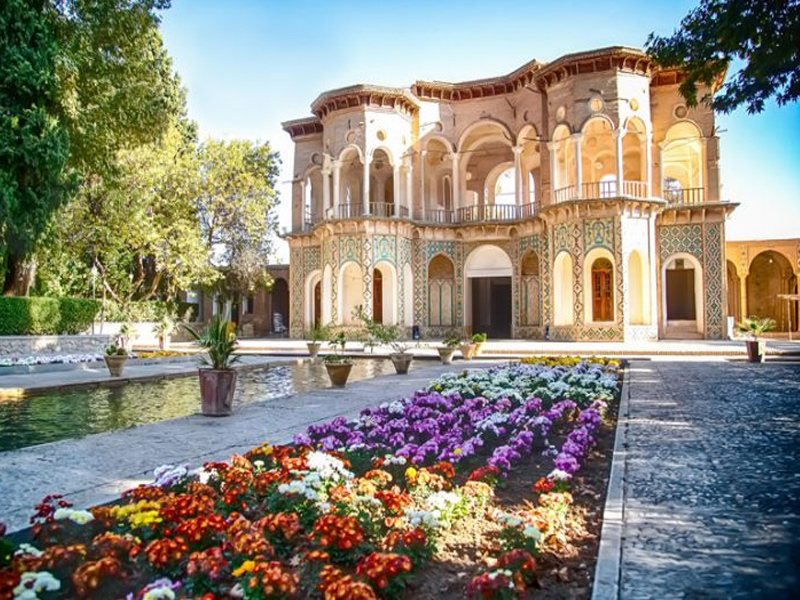
3- The Chehel Sotun Garden
The Iranian Chehel Sotun Garden is another structure that Isfahan has bestowed the title of “half of the world”, and much of its fame and reputation is owed to this title. The Chehel Sotun Garden has an area of over 67,000 square meters. Its original name was the Jahan Nama Palace, which was initiated during the reign of Shah Abbas I and completed by the end of the reign of Shah Abbas II.
During the construction period of Shah Abbas I, a small pavilion was built in the middle of the Chehel Sotun Garden, which formed the core of the World-Reflecting Palace.
In the Chehel Sotun Garden, there are remarkable sights and interesting landscapes, including massive columns, twenty-column halls, the Mirror Hall, and courtyards surrounding the royal hall adorned with exquisite mirror and tile work on the ceilings and walls. Stone lion sculptures placed in the four corners of the pool in the center of the Chehel Sotun Garden, as well as the delightful beauty of the goldsmith’s decorations in the Royal Seraglio, are worth mentioning. Additionally, next to the rooms surrounding the Mirror Hall, there are a series of large and heavy paintings depicting the Shahnameh kings of the Safavid dynasty.
The main masterpiece in the interior view of the Chehel Sotun Iranian Garden is related to a beautiful depiction of Shah Abbas I with a special and radiant crown and miniatures that are always noticeable in the Treasury Room, adorned with decorations.
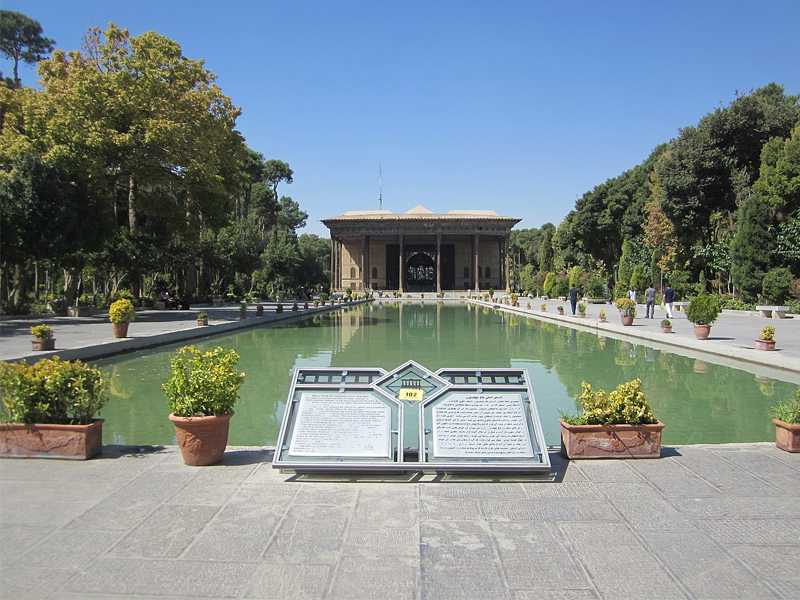
4- Eram Garden, an Iranian garden registered by UNESCO
Eram Garden is located in the northwestern part of Fars Province, precisely in Shiraz. So far, there is no definitive historical record of the person who constructed this beautiful Iranian garden. However, based on the presence of the name Eram in some ancient travelogues and historical accounts, we can roughly attribute the construction of this beautiful and beloved structure to the Seljuk period.
Donald Newton Wilber, a researcher of Iranian architectural history, wrote the following about Eram Garden, the original Iranian garden: “For at least 75 years, Eram Garden was in the possession of the Khans and dignitaries of the Qashqai tribes. They built a long wall within the Iranian garden, dividing it into two equal parts.”
The Iranian Eram Garden owes its immense popularity to the citrus trees and long pathways adorned with majestic cypress trees on both sides. It also features an attractive and beloved royal building that was prepared for hospitality and entertaining guests without any consideration for the Qashqai tribes. ”
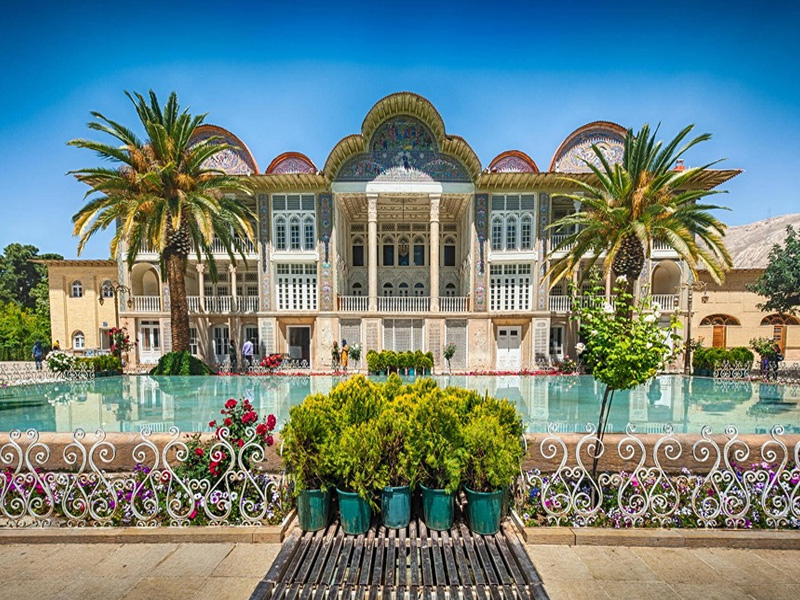
5- Bagh-e Fin
Bagh-e Fin in Kashan is one of the Iranian gardens that was built in ancient times in a place called Fin, located in the city of Kashan. All the people of Iran are aware that the Iranian garden of Fin in Kashan has gained fame and popularity due to its association with the name and memory of the prime minister of the Qajar government, the great man of Iranian history, Amir Kabir.
Bagh-e Fin in Kashan is a historical structure and one of the largest and most famous tourist attractions in Isfahan province.
Although some sources attribute the antiquity of this Iranian garden to the rule of the Albuoyeh dynasty, it has survived to this day in a partially destroyed state after a severe earthquake that destroyed all the gardens and buildings. The remaining remnants of this destroyed garden can still be found in a small fraction of the Iranian garden of Fin, which is referred to as the ancient garden.
Original Design of the Garden
The original design of this Iranian garden was carried out by a person named Ghias el-Din Jamshid Kashani. Ghias el-Din Jamshid Kashani was a famous mathematician in the 10th century. It can be said with certainty that the reason for the success of the design of this Iranian garden was solely due to the element of water.
This is because the water supply systems were meticulously engineered. It is also worth mentioning that during the reign of Fath Ali Shah in the Qajar period, many parts were added to this Iranian garden in terms of construction.
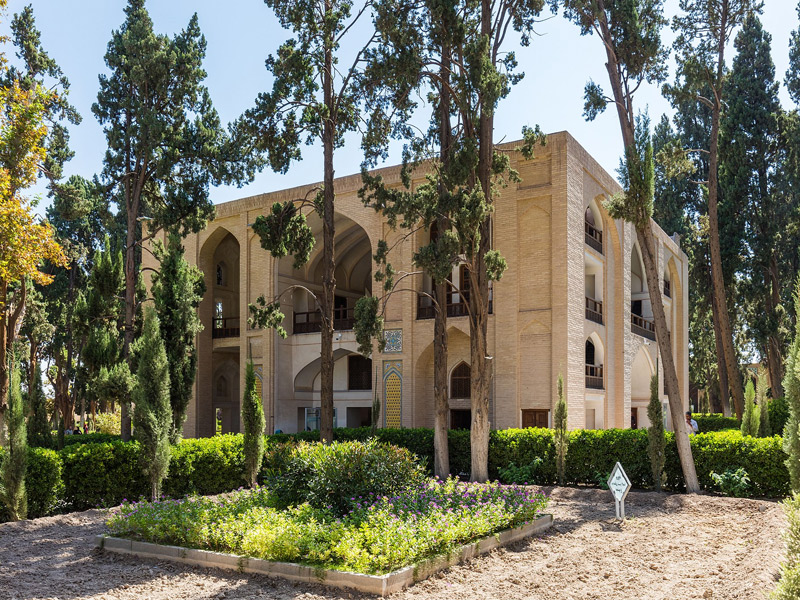
The Howz-e Joosh
One of the successful and influential examples of water engineering in the Iranian garden is the Bagh-e Fin in Kashan, which is called the Howz-e Joosh which consists of 180 basins.
The mechanism of the Howz-e Joosh in the Iranian garden is designed in such a way that the water simultaneously boils in 80 basins, and the remaining 80 basins direct the water directly into the main pool. The water flows through the channels or clay pipes towards the main pool, creating the fountains in the Iranian garden.
6- Abbasabad Garden: An Iranian Garden Registered by UNESCO
Abbasabad Garden in Behshahr is one of the best tourist attractions in Mazandaran province. The Iranian garden of Abbasabad in Behshahr has become a great attraction as the only non-desert Iranian garden.
The Abbasabad garden complex is located in the foothills of the Alborz Mountains, amidst lush and busy forests in the area, and it is located 9 kilometers from Behshahr city.
The Iranian garden of Abbasabad in Behshahr is a collection of gardens where you can witness all kinds of wonders, beauties, and dreamlike landscapes. Some of the attractions in this Iranian garden include the Abbasabad Dam, the reservoir and lake of the Abbasabad Dam, the flower garden, a palace, a bathhouse, a watermill, and twin brick towers.
It should be noted that all these attractions in the Abbasabad Iranian garden in Behshahr were built by the order of Shah Abbas the Great during the Safavid period in the years 1020 and 1021.
An interesting point about the Iranian garden of Abbasabad in Behshahr is its three-level structure. Since the garden was created on a sloping hill, skilled craftsmen and engineers in the Safavid period leveled the hill and created a staircase-like visual effect by building stairs, which is one of the special features of this garden.
Recently, other amazing ancient sites have been discovered in this Iranian garden, including watchtowers, the northern and southern courtyards, the water flow control dam and tower, pottery workshops, and more, which have multiplied the beauty and value of the Iranian garden of Abbasabad in Behshahr.
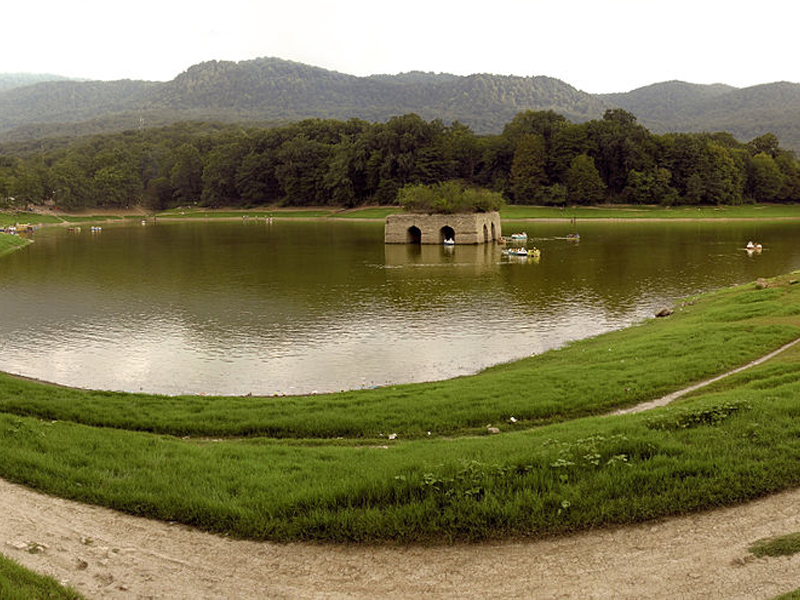
7- Dowlat Abad Garden
Dowlat Abad Garden, also known as Chahar Minar Garden, is one of the oldest and most precious gardens in, Iran. The Iranian garden, Dowlat Abad Garden, was built by Mohammad Taghi Khan Bafghi, also known as Khan-e Bozorg, at the end of the Afsharid period in 1125.
The Iranian garden, Dowlat Abad Garden, consists of fascinating and beautiful historical sites, including the Octagonal Pavilion, Badgir Mansion, Paradise Pavilion, Mirror Hall Pavilion, Main Entrance Pavilion, South Entrance Pavilion, and more, which added to its extraordinary beauty. In the Octagonal Pavilion and Badgir Mansion of Dowlat Abad Iranian Garden, you will notice the integration of air and water, which has created a unique and moderate climate in this region.
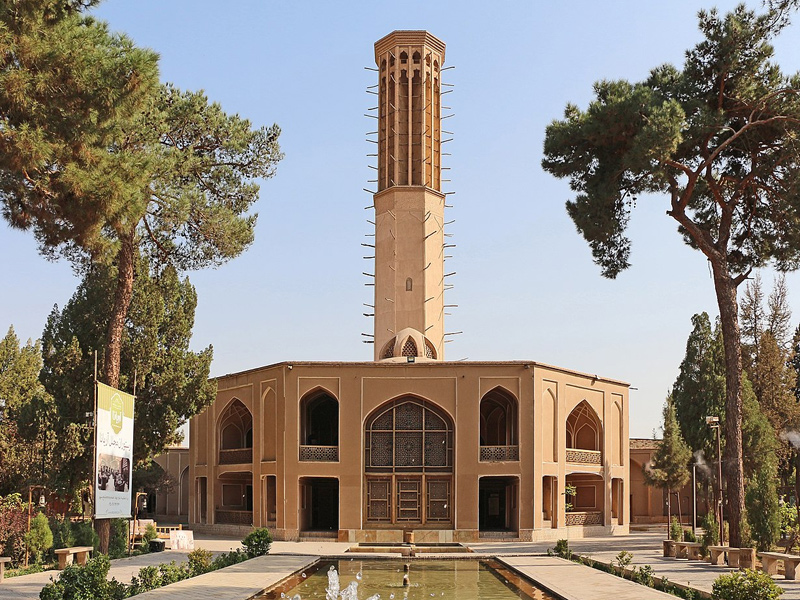
8- Bagh-e Akbarieh Birjand
Akbarieh Iranian Garden is still located inside the city of Birjand despite urban development. The value of Akbarieh Iranian Garden has been recognized as a UNESCO World Heritage Site in the thirty-fifth session.
In the past, the Akbarieh Iranian Garden was located in the central core of the Akbarieh village. The tourist and recreational complex of Akbarieh Iranian Garden was built with a dual purpose, serving both residential and governmental functions, with a significant portion of the buildings and interiors belonging to the Alim family, and the central part of the Iranian Garden associated with the royal court and government.
A remarkable and beautiful feature of this Iranian garden is the presence of 150-year-old pine trees, complemented by small gardens adorned with cypress trees, providing a unique and special display for domestic and international tourists.
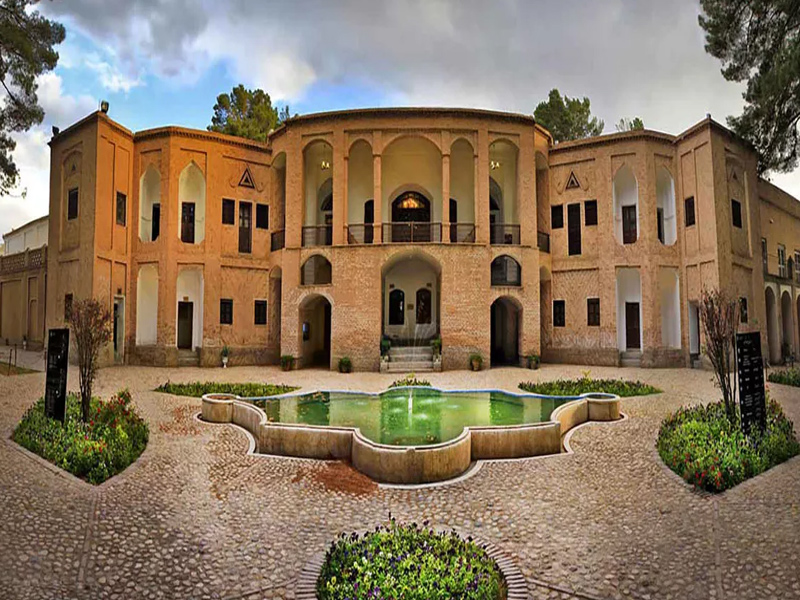
9- Pahlevanpur Garden
Pahlevanpur Iranian Garden, with its exquisite and adorned structures, is located in Meybod County of Yazd Province, in the neighborhood of “Mazvirabad”. This Iranian garden has been one of the most elegant tourist destinations due to its extraordinary beauty and has now been transformed into a dream hotel in the country.
Pahlevanpur Garden, with its exceptional location and captivating views, includes a protective tower, central pavilion, kitchen, treasury bath, and more. In different parts of the Pahlevanpur Iranian Garden, there are other sections such as the Koushk Mansion (Sherbet House), the kitchen, the treasury bath, and others, which were built by the order of Ali Pahlevan and date back to the hundred years.
It is also worth mentioning that the decorations used in the Pahlevanpur Iranian Garden were inspired by Zandiyeh decorations, while the construction of this beautiful and dreamlike Iranian garden belongs to the Qajar period.
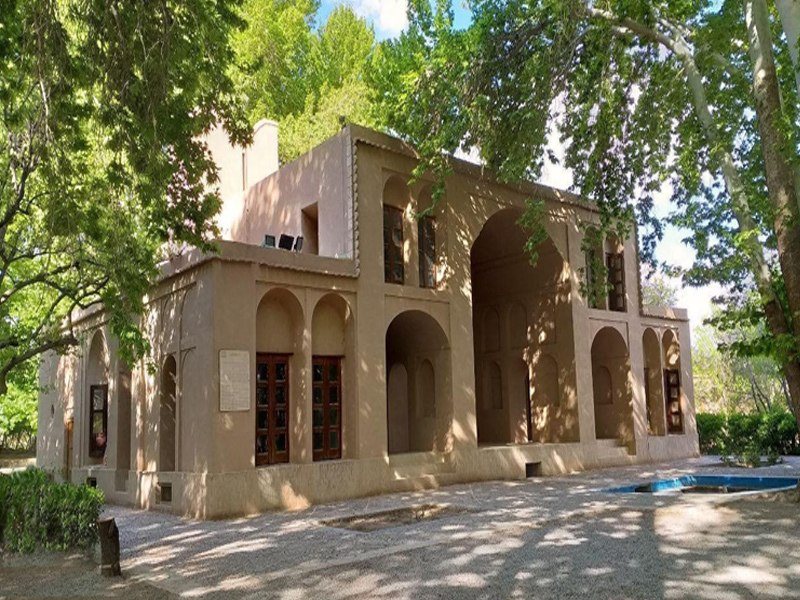
Conclusion
Iranian gardens have been of great interest to Iranian rulers since ancient times, which is why magnificent gardens can be seen in various parts of our country. Life in these gardens is like living in a city of dreams. By walking in these gardens, you can place your feet in the footsteps of rulers like Cyrus the Great or Shah Abbas II Safavi. In the architecture of all the gardens in our country, numerous pools and fountains have been employed so that the sound of water reaches the ears of the inhabitants in every corner of the garden. In this article, we have listed the famous Iranian gardens that have been registered in the UNESCO list, so that you can include a visit to these gardens in your next travel destination.
Frequently Asked Questions about Famous Iranian Gardens
1- Which is the oldest Iranian garden?
Pasargadae Garden is the oldest known Iranian garden.
2- Where is the tallest Badgir (windcatcher) in the world located?
The tallest Badgir (windcatcher) in the world is located in Dowlat Abad Garden in Yazd, confirmed by UNESCO.
3- Which is the most important garden in northern Iran?
Abbasabad Garden is the most important garden in northern Iran.
